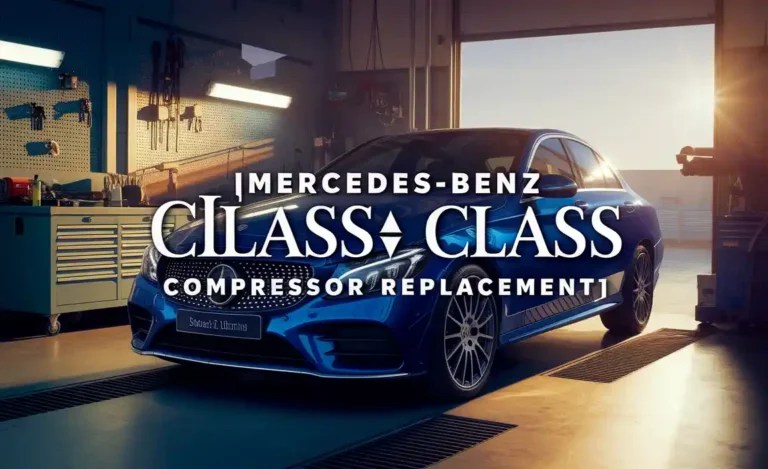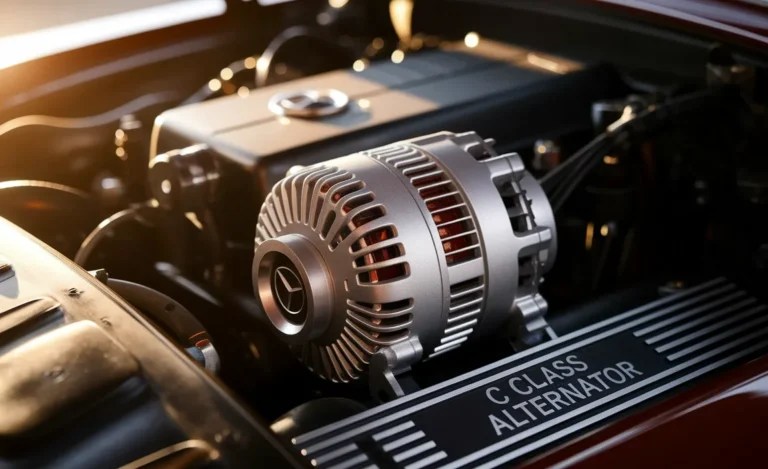Mercedes-Benz C Class CV Joint: Your Ultimate Essential
The C Class CV joint is a critical component that transfers power from your transmission to the wheels, allowing for smooth steering and acceleration. If it’s failing, you’ll often hear clicking or clunking noises, especially when turning. Keeping it in good shape ensures your Mercedes-Benz drives as it should.
Driving a Mercedes-Benz C-Class is an experience of refined engineering and dynamic performance. But like any finely tuned machine, components can wear over time. One such essential, and often overlooked, part is the Constant Velocity (CV) joint. You might not think about it until something goes wrong, and then it becomes a very noticeable issue.
A damaged CV joint can lead to uncomfortable noises, poor handling, and, in severe cases, put your vehicle out of commission. Don’t worry, though! This guide will demystify the C Class CV joint, explaining its function, common problems, and how to spot issues before they become major headaches. We’ll walk you through what you need to know to keep your C-Class driving smoothly and confidently.
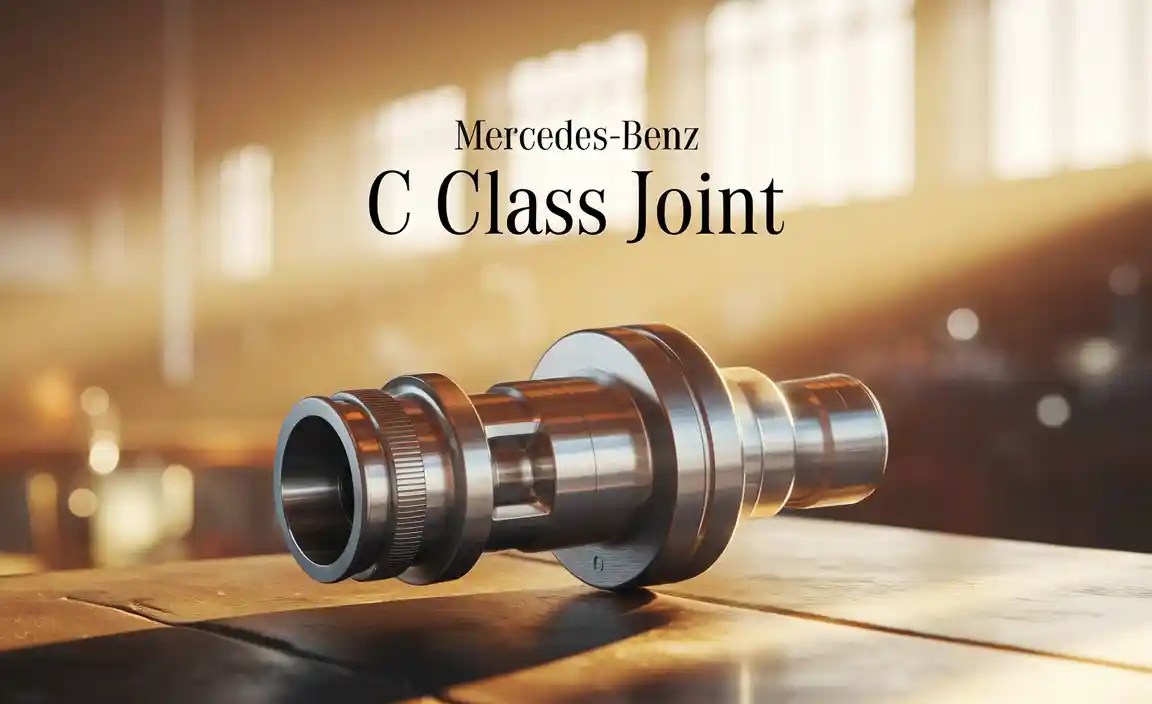
What Exactly Is a CV Joint?
The “CV” in CV joint stands for Constant Velocity. Its primary job is to transfer rotational power from the gearbox (transmission) to the wheels of your C-Class, even when the suspension is moving or when you’re turning the steering wheel.
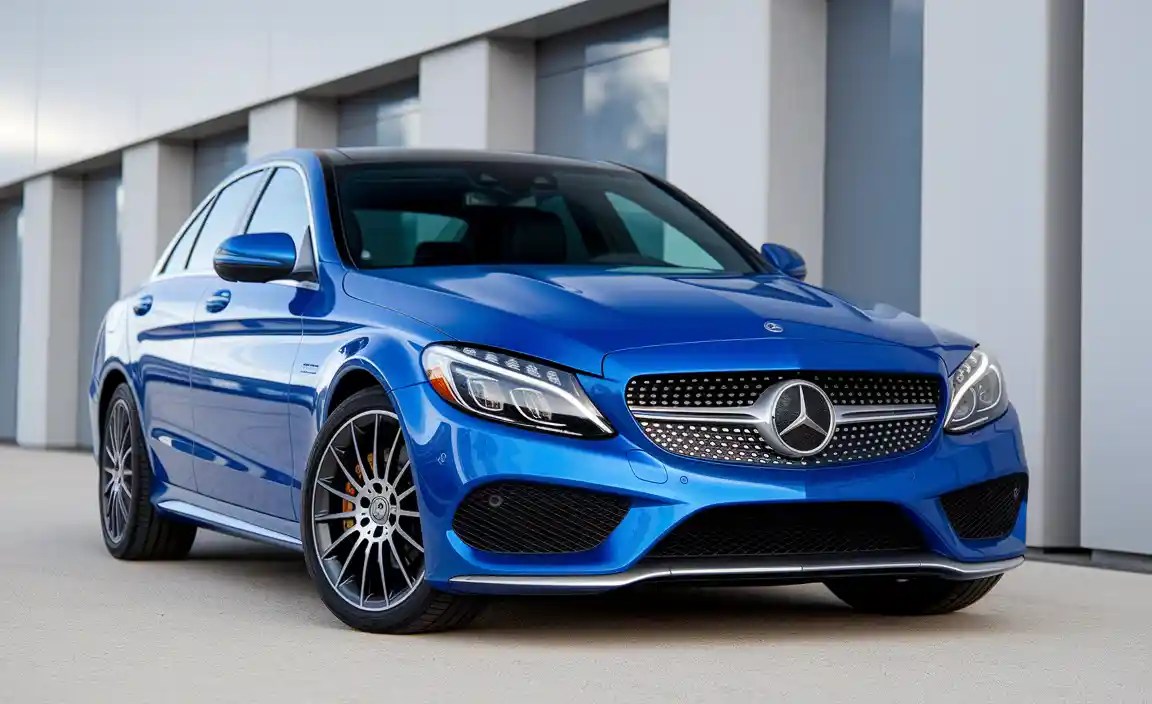
Think of it as a universal joint that can operate at a constant speed regardless of the angle. This is crucial for front-wheel-drive and rear-wheel-drive vehicles where the front wheels have to steer and often handle suspension travel simultaneously.
How It Works
A CV joint typically consists of an inner race, an outer race, and several ball bearings nestled between them. These ball bearings allow the joint to flex and rotate smoothly at various angles. The entire assembly is housed within a protective rubber boot filled with grease. This boot is vital; it keeps dirt and moisture out and the lubricant in. Without the boot, the joint would quickly degrade and fail.
CV Joints in the C-Class
In a Mercedes-Benz C-Class, you’ll find CV joints on the drive axles. These are the shafts that connect the differential to the wheel hubs. There are typically two main types of CV joints used:
- Rzeppa joint: Usually found on the outer ends of the drive axles, closer to the wheels. These are robust and can handle large angles, making them ideal for steering.
- Tripod joint: Often found on the inner ends of the drive axles, closer to the transmission. These are designed for longer travel and can accommodate more significant changes in axle length.
The precise configuration can vary slightly depending on the specific C-Class model and year, but the fundamental purpose remains the same: to ensure smooth, consistent power delivery to the wheels no matter the driving conditions.
Common CV Joint Problems in the C-Class
Like any automotive part, CV joints can wear out or become damaged. The most common culprit is a torn or breached CV boot. When this protective rubber boot fails, dirt, water, and debris can enter the joint, while the lubricating grease escapes. This leads to increased friction, corrosion, and premature wear of the internal components.

Signs of a Failing CV Joint
Recognizing the symptoms of a worn CV joint early can save you from more extensive and costly repairs. Here are the tell-tale signs to look out for:
- Clicking or Popping Noises When Turning: This is the most classic symptom. As you turn your steering wheel, especially at lower speeds, you might hear a rhythmic clicking or popping sound that gets louder the sharper you turn. This indicates the outer CV joint is likely worn.
- Clunking Noises During Acceleration or Deceleration: A deeper clunking sound, often felt as a vibration through the car, can occur when you accelerate from a stop or when you abruptly let off the gas. This might point to wear in either the inner or outer joints.
- Grease Leaks Around the Axle: Inspect the rubber boots on your drive axles. If you see any greasy residue slung around the inside of the wheel well or the axle itself, it’s a strong indicator that a boot has a tear or hole, and the CV joint is likely compromised.
- Vibration: A damaged CV joint can sometimes cause a vibration, particularly felt through the steering wheel or the floorboards, that increases with speed.
- Stiff Steering or Reduced Turning Radius: In extreme cases of joint failure, you might notice that your steering feels stiff or that you can’t turn the wheel as sharply as usual.
Why CV Boot Maintenance is Essential
The CV boot might seem like a minor component, but its integrity is crucial for the longevity of the entire CV joint and axle assembly.
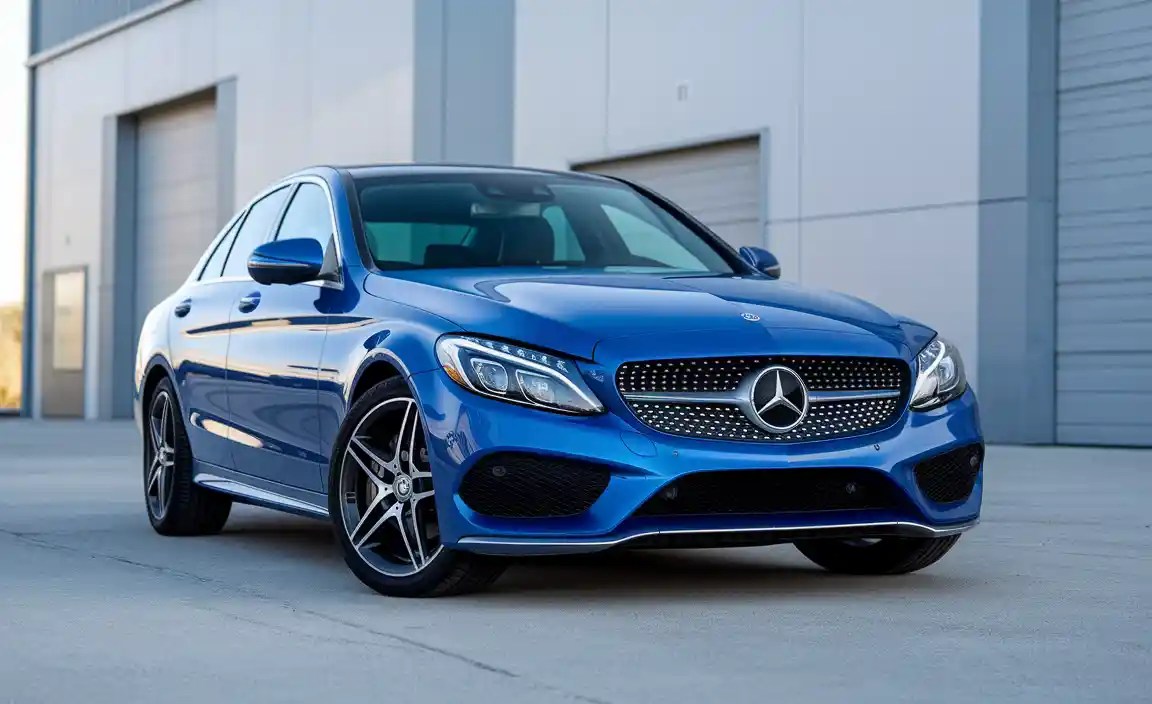
The Role of the CV Boot
- Protection: The boot acts as a shield, preventing contaminants like dirt, water, sand, and salt from entering the CV joint.
- Lubrication Retention: It seals in the specialized high-temperature grease that lubricates the ball bearings and races within the joint, ensuring smooth operation and preventing metal-on-metal contact.
- Flexibility: Made from durable rubber or silicone, the boot is designed to flex and bend with the movement of the suspension and steering.
Consequences of a Damaged Boot
A torn, cracked, or degraded CV boot will inevitably allow contaminants in and lubricant out. This unleashes a cascade of problems:
-
- Contamination: Dirt and grit act like sandpaper, rapidly wearing down the precision surfaces of the CV joint’s bearings and races.
- Lubrication Loss: Without sufficient grease, friction increases dramatically, leading to overheating and accelerated wear. Any grease that remains can become contaminated, further worsening the situation.
- Corrosion: Water ingress can lead to rust and corrosion within the metal components of the joint.
- Joint Failure: If left unaddressed, the damage will progress until the CV joint seizes or, in the worst-case scenario, the axle separates from the wheel hub, leading to a complete loss of drive and potentially a loss of control over the vehicle.
This is why regular visual inspections of your C-Class’s CV boots during routine maintenance are so important.
Diagnosing CV Joint Issues
Pinpointing a faulty CV joint often starts with listening and feeling during your drives. However, a thorough diagnosis involves a physical inspection.
Visual Inspection
With your C-Class safely parked and the parking brake engaged, you or your mechanic will need to get boots-on-the-ground to inspect the drive axles.
-
-
- Raise the Vehicle: Safely lift the vehicle using a reliable jack and secure it with jack stands. Never work under a car supported only by a jack.
- Inspect the Boots: Carefully examine the rubber boots on both the inner and outer ends of the front and rear drive axles (depending on your C-Class’s drivetrain). Look for any signs of tearing, cracking, splitting, or unusual bulges (which can indicate grease expulsion).
- Check for Grease: Look for any greasy buildup on the surrounding suspension components, the inside of the wheel, or the frame. This is a clear sign of a boot leak.
- Wiggle Test (with caution): If the boots appear intact but you suspect an issue, a mechanic might attempt to gently flex the axle to check for play in the joint. However, excessive manipulation can worsen existing damage, so this is best left to professionals.
-
Auditory and Tactile Checks
-
-
- Test Drive: Drive the vehicle and pay close attention to any unusual sounds.
- Turn the steering wheel fully left and right at a slow speed in an open area. Listen for clicking or popping.
- Accelerate moderately from a standstill. Listen for clunks.
- Gently coast and then accelerate slightly. Listen for any knocking sounds.
- Feel for Vibrations: Notice any unusual vibrations while driving at different speeds, especially during turns or acceleration.
- Test Drive: Drive the vehicle and pay close attention to any unusual sounds.
-
Common Diagnostic Tools and Techniques
While visual inspection and test drives are primary, mechanics might use:
-
-
- Stethoscope: To pinpoint the source of noises by listening directly to the axle components.
- Endoscope/Borescope: To inspect the insides of CV boots without removing the axle, especially if a tear is not immediately visible.
- Advanced Diagnostics: For AWD models, ensuring all wheel speed sensors and differential systems are functioning correctly can rule out or confirm drivetrain issues. Reputable sources like Bosch Motorsport offer insights into advanced drivetrain technologies, including CV joints.
-
Replacing a C-Class CV Joint
Replacing a CV joint or the entire drive axle is a moderately complex repair that requires specific tools and mechanical aptitude. It’s often recommended for experienced DIYers or handled by a professional mechanic.

Tools and Materials Needed
Gathering the right tools is half the battle. For a C-Class CV joint replacement, you’ll likely need:
-
-
- New CV axle assembly or CV joint kit (ensure it’s the correct one for your C-Class model and year)
- Jack and jack stands
- Lug wrench
- Socket set (metric, likely including deep sockets)
- Torque wrench
- Pry bar
- Hammer
- Wire brush
- Brake cleaner or degreaser
- Penetrating oil
- Safety glasses and gloves
- New cotter pins and nuts (often recommended)
- Possibly a ball joint separator
- Replacement CV boot kit (if replacing just the boot)
-
Step-by-Step Replacement Guide (General Overview)
This is a simplified overview. Always consult your C-Class’s specific service manual for precise instructions.
-
-
- Prepare the Vehicle: Engage the parking brake and block the rear wheels. Loosen the lug nuts on the wheel you’ll be working on, but do not remove them yet.
- Lift and Secure: Safely jack up the front or rear of the C-Class (depending on which axle you’re servicing) and support it securely with jack stands. Remove the wheel.
- Disconnect Components: You’ll likely need to remove or loosen components to gain access to the drive axle. This can include:
- The brake caliper and rotor.
- Ball joints or control arms (may require a ball joint separator).
- The sway bar end link.
- Remove the Axle Nut: Locate and remove the large axle nut at the center of the wheel hub. This can be very tight and may require significant force.
- Separate the Axle: Carefully pry the drive axle out of the hub assembly or differential. You might need to gently tap it with a hammer or pry bar. Avoid damaging the axle splines or the surrounding seals.
- Remove the Old Axle: Maneuver the old drive axle out of the vehicle. Be prepared for residual transmission fluid to leak if you’re removing the inner joint from a transaxle.
- Prepare the New Axle: Install the new CV axle, ensuring it’s the correct length and orientation.
- Install the New Axle: Insert the splined end of the new axle into the hub and the differential securely.
- Reconnect Components: Reassemble all the suspension components that were disconnected, torquing all fasteners to the manufacturer’s specifications. This is critical for safety and proper handling.
- Install Axle Nut: Install the new axle nut and torque it to the specified value. This is a crucial step for wheel bearing and CV joint integrity.
- Reinstall Wheel: Put the wheel back on and snug the lug nuts.
- Lower Vehicle: Carefully lower the vehicle.
- Final Torque: Torque the lug nuts to specification in a star pattern.
- Check Fluid Levels: If transmission fluid was lost, top it up to the correct level.
- Test Drive: Perform a cautious test drive to ensure there are no unusual noises or vibrations and that everything operates smoothly.
-
Boot Replacement vs. Axle Replacement
In some cases, if the CV joint itself is not yet significantly damaged, you can opt to replace only the torn CV boot.
-
-
- Pros of Boot Replacement: More cost-effective than replacing the entire axle; uses fewer new parts.
- Cons of Boot Replacement: Labour-intensive; requires thorough cleaning of the joint; success depends heavily on the condition of the joint before the tear. If there’s any grinding or clicking already, replacing the boot alone won’t fix it.
- Pros of Axle Replacement: A completely new unit; typically resolves all joint-related issues; often easier than a boot-only replacement.
- Cons of Axle Replacement: More expensive than a boot kit; might be overkill if the joint is only slightly worn.
-
For peace of mind and to ensure long-term reliability on a Mercedes-Benz, replacing the entire drive axle assembly is generally the preferred method for significant wear or damage.
CV Joints vs. Universal Joints
While both CV joints and universal joints (U-joints) are used in vehicle drivelines to transmit power through changing angles, they differ significantly in their design and function, especially in a luxury vehicle like the C-Class.

| Feature | Constant Velocity (CV) Joint | Universal (U-Joint) |
|---|---|---|
| Primary Function | Transmits power at a constant speed regardless of angle, allowing for smooth operation during steering and suspension travel. | Transmits rotational power through an angle, but output speed fluctuates relative to input speed at extreme angles. |
| Applications on C-Class | Front and rear drive axles, especially where steering angle and significant suspension travel are required (e.g., front wheels). | Less common on modern C-Class front drive axles compared to CV joints. May be found on some rear driveshafts in specific models or older architectures. |
| Angle Capability | Can operate at much larger and more varied angles while maintaining constant velocity. | Limited in angle before speed fluctuations become significant, often requiring two U-joints to counteract each other. |
| Smoothness & Comfort | Provides a much smoother, quieter, and more refined driving experience, essential for Mercedes-Benz luxury vehicles. | Can introduce NVH (Noise, Vibration, Harshness) if not properly managed, which is undesirable for premium cars. |
| Maintenance | Typically sealed units; require boot inspection and replacement if damaged. | Often serviceable with grease nipples, though modern designs can also be sealed. |


